Archive
Ludwig Meidner, Drawings 1920–1922 and 1935–49, Else Meidner, Paintings and Drawings 1935–1949
- Ludwig Meidner, Drawings 1920–1922 and 1935–49, Else Meidner, Paintings and Drawings 1935–1949
Word Count: 9
- Exhibition
- 05-10-1949
- 02-11-1949
In 1949, a joint exhibition of works by Ludwig and Else Meidner opened at the Ben Uri Art Gallery. It was the first solo exhibition of the artists in London.
Word Count: 29
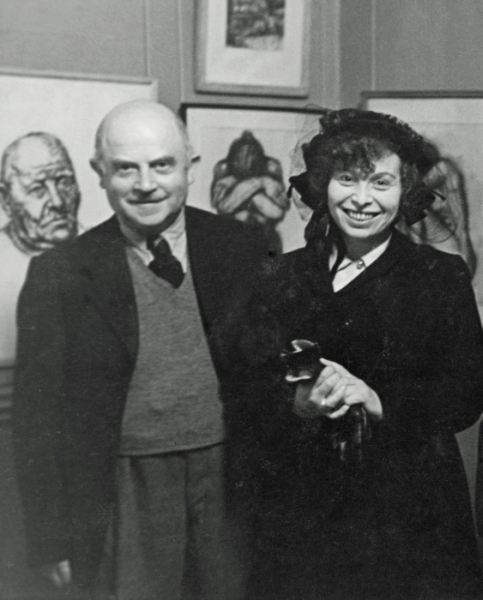
Ludwig and Else Meidner at the exhibition opening at the Ben Uri Art Gallery, London, October 1949, photographer unknown (© Ludwig Meidner-Archiv, Jüdisches Museum der Stadt Frankfurt am Main). 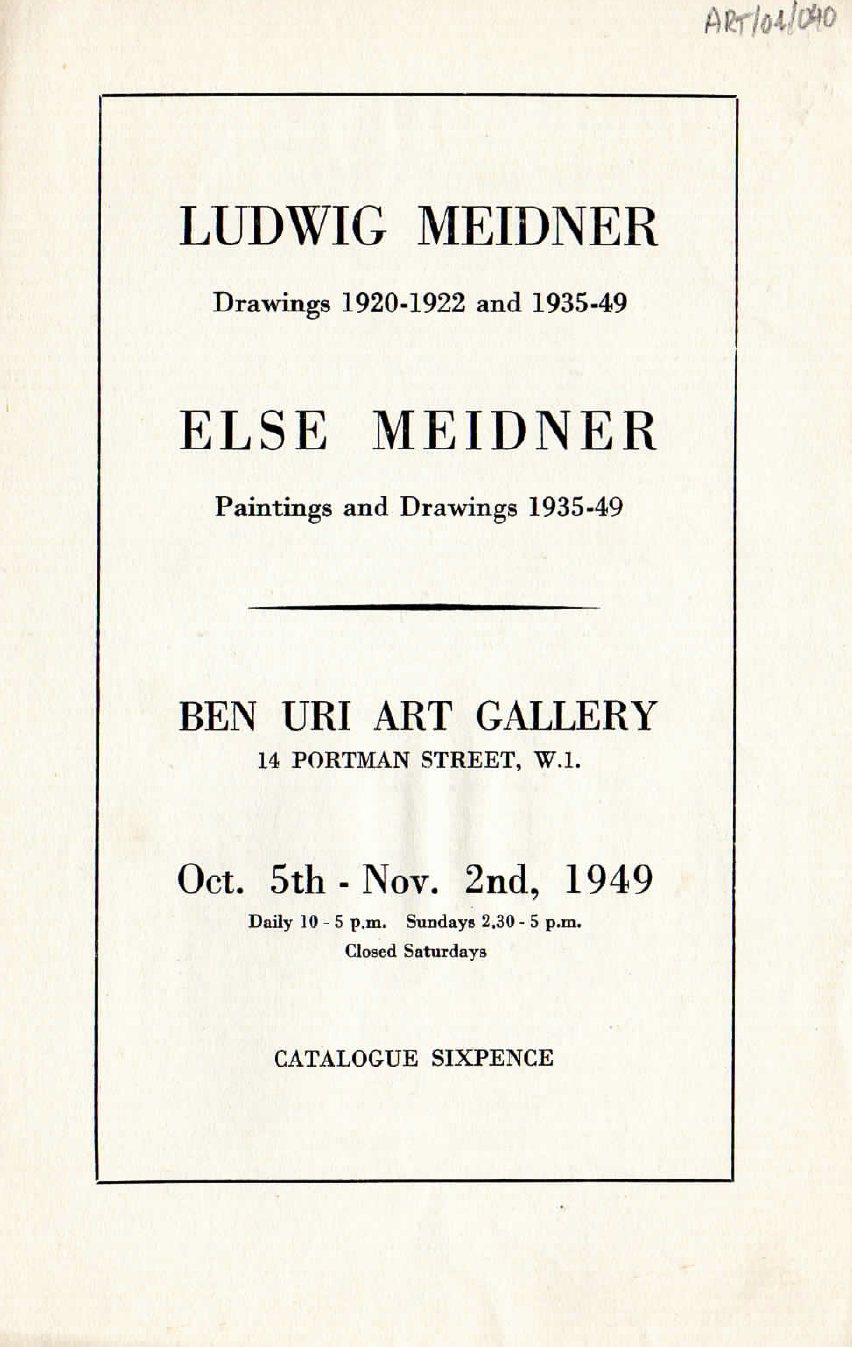
Ludwig Meidner, Drawings 1920–1922 and 1935–49, Else Meidner, Paintings and Drawings 1935–1949, exh. cat. Ben Uri Art Gallery, 1949, cover (© Ben Uri Archive). 
Ludwig Meidner, Drawings 1920–1922 and 1935–49, Else Meidner, Paintings and Drawings 1935–1949, exh. cat. Ben Uri Art Gallery, 1949, p. 1 (© Ben Uri Archive). 
Ludwig Meidner, Drawings 1920–1922 and 1935–49, Else Meidner, Paintings and Drawings 1935–1949, exh. cat. Ben Uri Art Gallery, 1949, pp. 2–3 (© Ben Uri Archive). 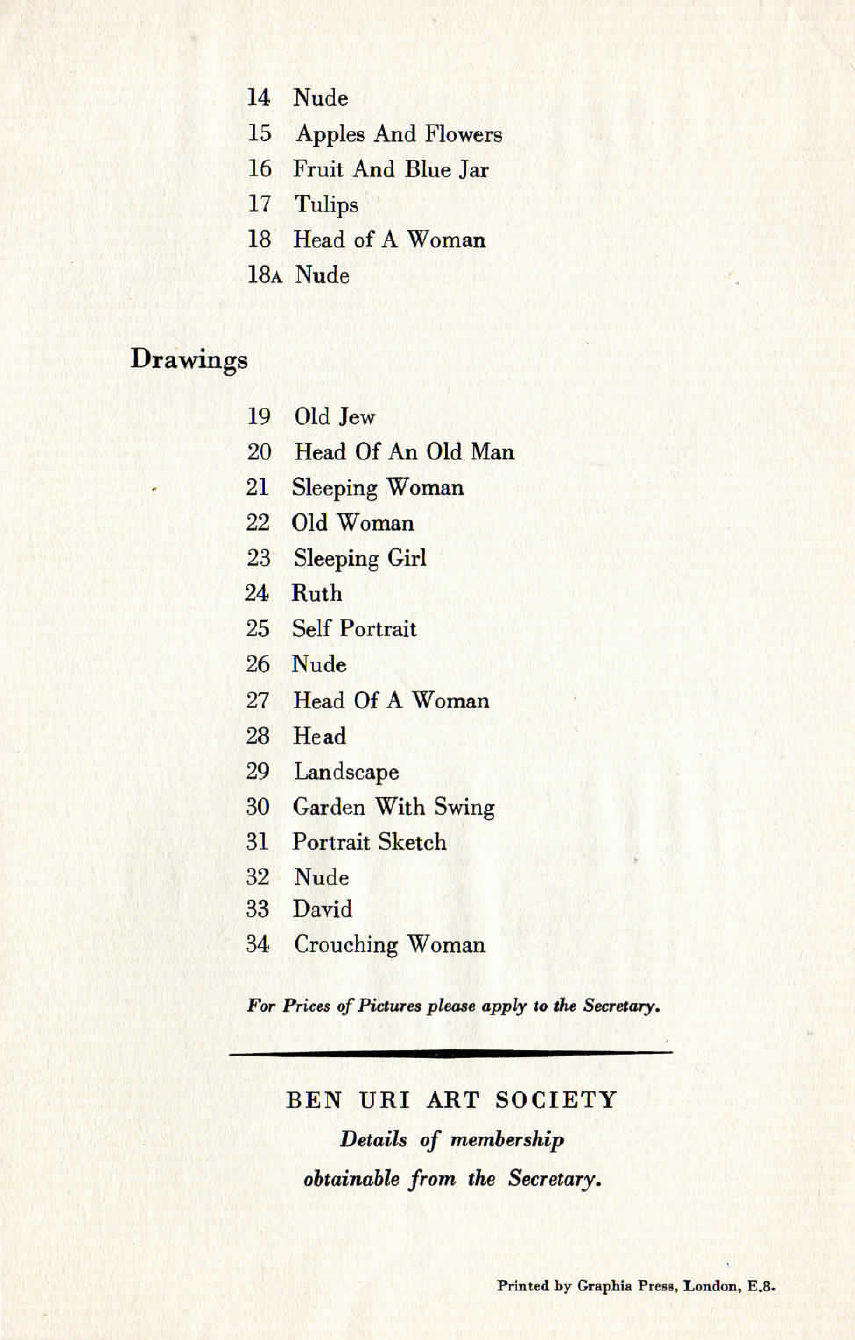
Ludwig Meidner, Drawings 1920–1922 and 1935–49, Else Meidner, Paintings and Drawings 1935–1949, exh. cat. Ben Uri Art Gallery, 1949, p. 4 (© Ben Uri Archive). 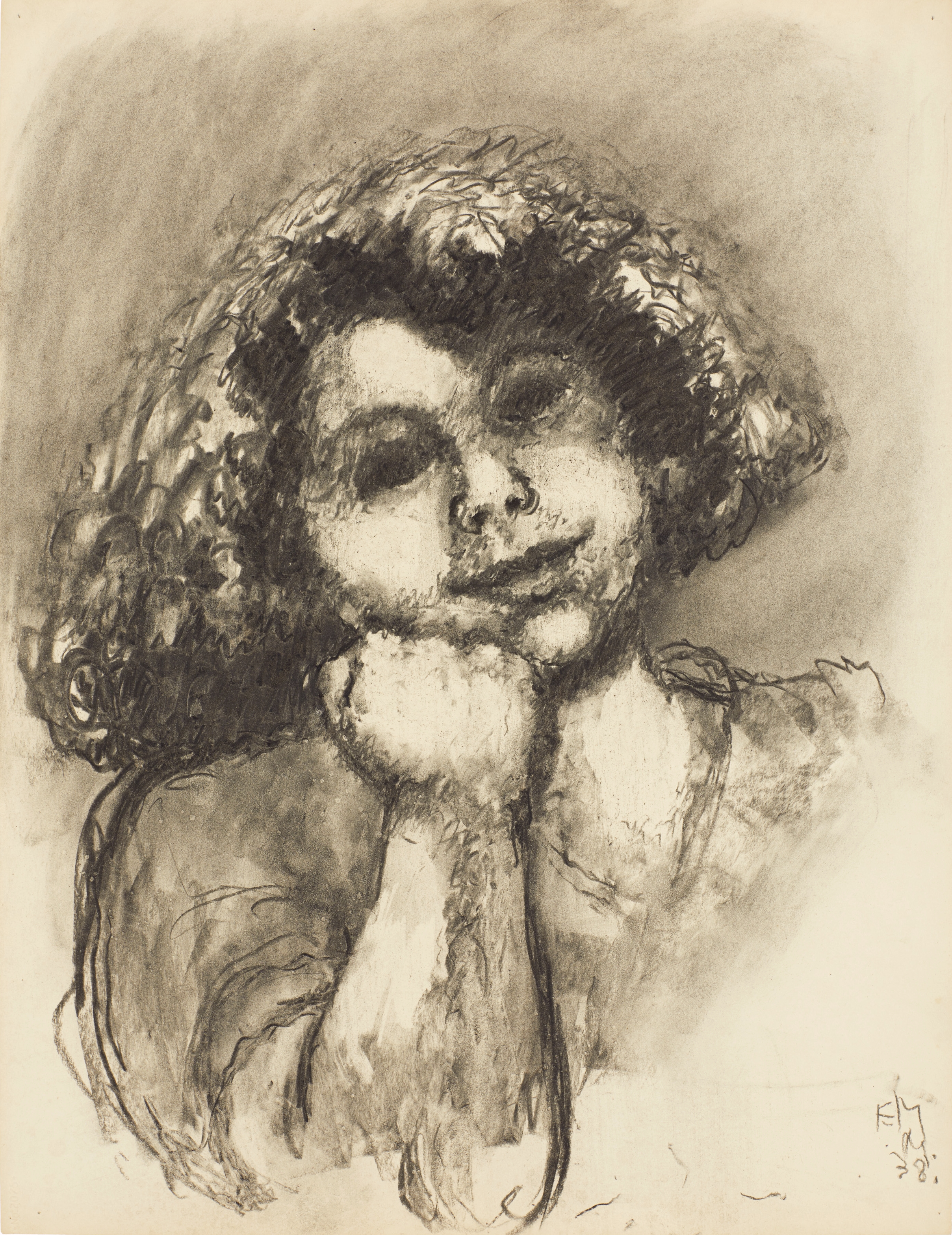
Else Meidner, Self-portrait with chin propped up, 1938, charcoal, 65,0 x 50,0 cm, Ludwig Meidner Archiv, Jüdisches Museum Frankfurt (© Jüdisches Museum Frankfurt, CC BY SA 4.0). 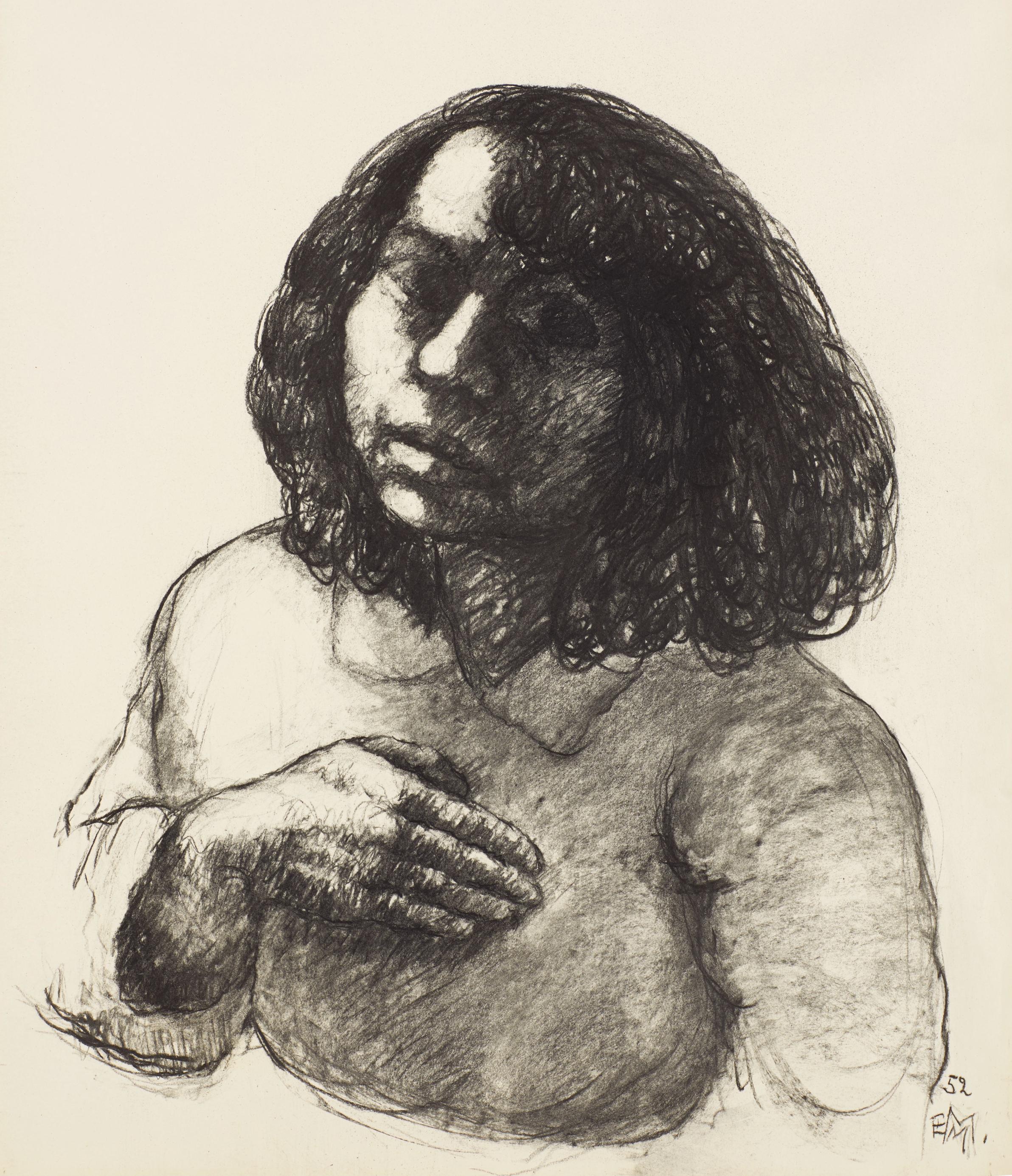
Else Meidner, Self-portrait, 1952, charcoal, 68,3 x 52,8 cm, Ludwig Meidner Archiv, Jüdisches Museum Frankfurt (© Jüdisches Museum Frankfurt, CC BY SA 4.0). 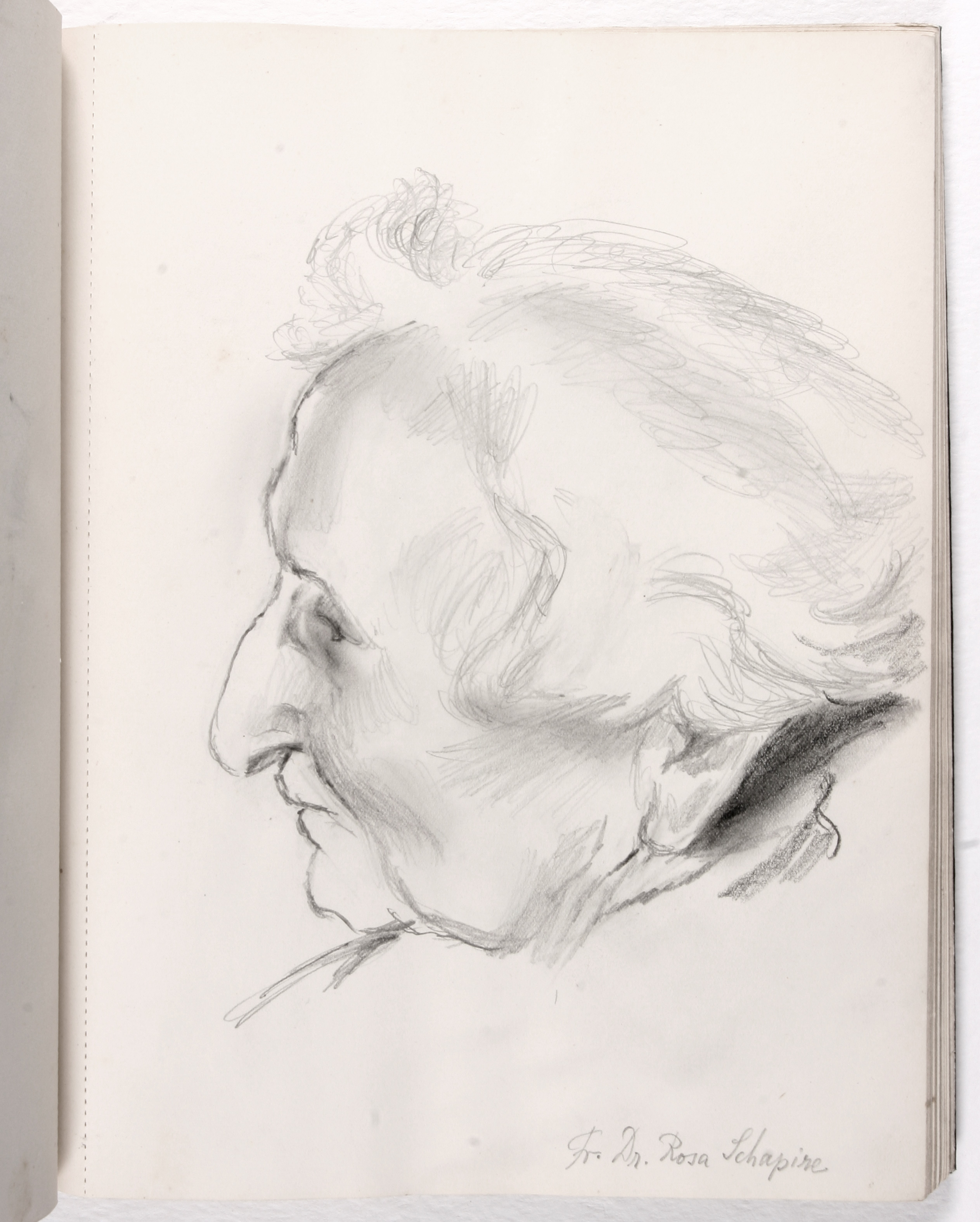
Ludwig Meidner, Portrait of Rosa Schapire, London, 1946, sketchbook 8 July 1945–13 September 1946, pencil on paper, 28 x 21 cm (© Ludwig Meidner-Archiv, Jüdisches Museum der Stadt Frankfurt am Main). 
Else Meidner exhibition, invitation card, Ben Uri Art Gallery, London, 1972 (© Ben Uri Archive). 
Else Meidner, exh. cat. Ben Uri Art Gallery, London, 1972, cover (© Ben Uri Archive). Adkins, Helen. “Ludwig Meidner in England – Vierzehn Jahre eines erbärmlichen Lebens.” Ludwig Meidner. Zeichner, Maler, Literat 1884–1966, vol. 1, edited by Gerda Breuer and Ines Wagemann, exh. cat. Mathildenhöhe Darmstadt, Darmstadt, 1991, pp. 172–181.
Behr, Shulamith. “Ludwig Meidner: Exil, Kreativität und Holocaust-Bewusstsein.” Horcher in die Zeit. Ludwig Meidner im Exil, exh. cat. Museum Giersch der Goethe-Universität, Frankfurt am Main, 2016, pp. 148–161.
Behr, Shulamith. “Ludwig Meidners Zyklus ‘Leiden der Juden in Polen’ (1942–1945) / Ludwig Meidner’s Cycle ‘Leiden der Juden in Polen’ (1942–1945).” Ludwig Meidner. Expressionismus, Ekstase, Exil / Ludwig Meidner, Exile, Ecstasy, Expressionism, edited by Erik Riedel and Mirjam Wenzel, Gebr. Mann, 2018, pp. 279–297.
Dickson, Rachel. “Emigré Artists and the Ben Uri.” Forced Journeys. Artists in Exile in Britain c. 1933–45, edited by Rachel Dickson and Sarah MacDougall, exh. cat. Ben Uri Gallery, The London Jewish Museum of Art, London, 2009, pp. 86–90.
Dickson, Rachel, and Sarah MacDougall. “Artists in Exile c. 1933–45.” Forced Journeys. Artists in Exile in Britain c. 1933–45, edited by Rachel Dickson und Sarah MacDougall, exh. cat. Ben Uri Gallery, The London Jewish Museum of Art, London 2009, pp. 18–49.
Dickson, Rachel, and Sarah MacDougall. “Mapping Finchleystraße: Mitteleuropa in North West London.” Arrival Cities. Migrating Artists and New Metropolitan Topographies in the 20th Century, edited by Burcu Dogramaci et al., Leuven University Press, 2020, pp. 229–248.
Dogramaci, Burcu. “Meidners Londoner Jahre: Produktion und Rezeption im Zeichen des Exils / Meidner’s London Years: Production and Reception in Exile.” Ludwig Meidner. Expressionismus, Ekstase, Exil / Ludwig Meidner. Exile, Ecstasy, Expressionism, edited by Erik Riedel and Mirjam Wenzel, Gebr. Mann, 2018, pp. 257–278.
Else Meidner, exh. cat. Ben Uri Art Gallery, London, 1972. Ben Uri Research Unit, www.buru.org.uk/archive_record.php?id=441&st=Else+Meidner. Accessed 7 April 2021.
Feather, Jessica. Art behind barbed wire, exh. cat. Walker Art Gallery, National Museums Liverpool, Liverpool, 2004.
Grochowiak, Thomas. Ludwig Meidner. Verlag Aurel Bongers, 1966.
Hodin, Josef Paul. Ludwig Meidner. Seine Kunst, seine Persönlichkeit, seine Zeit (Darmstädter Schriften, 33). Justus-von-Liebig-Verlag, 1973.
Hodin, Josef Paul. Aus den Erinnerungen von Else Meidner. Eine Würdigung ihres Werkes (Darmstädter Schriften, 42). Justus-von-Liebig-Verlag, 1979.
Hodin, Joseph Paul. “Else und Ludwig Meidner in England.” Ludwig Meidner. Zeichner, Maler, Literat 1884–1966, vol. 1, edited by Gerda Breuer and Ines Wagemann, Mathildenhöhe Darmstadt, Darmstadt, 1991, pp. 182–188.
Ludwig Meidner, Drawings 1920–1922 and 1935–49, Else Meidner, Paintings and Drawings 1935–1949, exh. cat., Ben Uri Art Gallery, London, 1949. Ben Uri Research Unit, https://d303gnxmdhyq59.cloudfront.net/archive/BU_Exhib_Meidner_1949.pdf. Accessed 7 April 2021.
Ludwig Meidner 1884–1966, exh. cat. Kunstverein Wolfsburg e.V., Wolfsburg, 1985.
Nationalsozialismus und “Entartete Kunst”. Die “Kunststadt” München 1937 (5th edition), edited by Peter-Klaus Schuster, exh. cat. Staatsgalerie Moderner Kunst, München, 1998.
Nungesser, Michael. “Die bildenden Künstler im Exil.” Kunst im Exil in Großbritannien 1933–1945, exh. cat. Neue Gesellschaft für bildende Kunst, Berlin, 1986, pp. 27–34.
Out of Chaos. Ben Uri: 100 Years in London, edited by Rachel Dickson and Sarah MacDougall, exh. cat. Ben Uri, London, 2015. issuu, https://issuu.com/benurigallery/docs/out_of_chaos_catalogue. Accessed 18 March 2021.
Pross, Steffen. “In London treffen wir uns wieder”. Vier Spaziergänge durch ein vergessenes Kapitel deutscher Kulturgeschichte nach 1933. Eichhorn, 2000.
Riedel, Erik. “Ludwig und Else Meidner – zu Leben und Werk.” Ludwig und Else Meidner, edited by Georg Heuberger, exh. cat. Jüdisches Museum, Frankfurt am Main, 2002, pp. 12–24.
Riedel, Erik. “‘Die inwendigen Bilder’. Ludwig Meidners Allegorien, Visionen und Humoresken aus dem englischen Exil.” Horcher in die Zeit. Ludwig Meidner im Exil, exh. cat. Museum Giersch der Goethe-Universität, Frankfurt am Main, 2016, pp. 80–91.
Subjects of Jewish Interest. Paintings, Sculpture and Drawings, exh. cat. Ben Uri Art Gallery, London, 1946. Ben Uri Research Unit, https://d303gnxmdhyq59.cloudfront.net/archive/Bu_exhib_JewishInterest_1946.pdf. Accessed 9 April 2021.
Teschner, Ursula. “Else Meidner – Leben und Werk.” Else Meidner 1901–1987. Ölbilder, Gouachen, Zeichnungen, Radierungen, exh. cat. Jüdische Gemeinde Darmstadt, Darmstadt, 1999, pp. 17–37.
Vinzent, Jutta. Identity and Image. Refugee Artists from Nazi Germany in Britain (1933–1945) (Schriften der Guernica-Gesellschaft, 16). VDG, 2006.
Word Count: 624
Jüdisches Museum, Frankfurt am Main, Ludwig Meidner-Archiv.
Jüdisches Museum, Frankfurt am Main, Collection of Else Meidner’s works.
Word Count: 20
My deepest thanks go to Erik Riedel from Ludwig Meidner-Archiv at Jüdisches Museum Frankfurt am Main for providing me with images and to Rachel Dickson and Sarah MacDougall for their advice and help. I am grateful to the Ben Uri Archive, London for allowing me to reproduce the materials used in this entry.
Word Count: 54
Ben Uri Art Gallery, 14 Portman Street, West End, London W1.
- London
- Burcu Dogramaci. "Ludwig Meidner, Drawings 1920–1922 and 1935–49, Else Meidner, Paintings and Drawings 1935–1949." METROMOD Archive, 2021, https://archive.metromod.net/viewer.p/69/1470/object/5141-11267577, last modified: 19-06-2021.
-
Rosa SchapireArt HistorianLondon
The art historian Rosa Schapire, a supporter of Expressionist art, contributed to the presence of Expressionist art in England with loans and donations from her art collections rescued to London.
Word Count: 30
John HeartfieldArtistGraphic DesignerFotomonteur (mounter of photographs)LondonAfter escaping from his first exile in Prague in December 1938, the political artist John Heartfield lived in London since 1950, working for Picture Post and the publisher Lindsay Drummond.
Word Count: 28
Exhibition of German Jewish Artists’ Work: Painting – Sculpture – ArchitectureExhibitionLondonThe Exhibition of German Jewish Artists’ Work was organised in 1934 by Carl Braunschweig at the Parsons Galleries in Oxford Street and featured 220 works by German Jewish artists.
Word Count: 27
20th Century German ArtExhibitionLondonThe 20th Century German Art exhibition of 1938 gave visibility to artists who had been defamed at the Munich exhibition Entartete Kunst and were persecuted by the National Socialist regime.
Word Count: 29
Jussuf AbboSculptorGraphic ArtistLondonThe Berlin sculptor Jussuf Abbo emigrated together with his family to London in 1935, where he received a limited number of commissions and participated in a few group exhibitions.
Word Count: 28
Kurt SchwittersArtistPoetLondonThe artist and poet Kurt Schwitters lived in London between 1941 and 1945, where he stood in contact to émigré and local artists, before moving to the Lake District.
Word Count: 27
Modern Art GalleryArt GalleryLondonThe Modern Art Gallery, founded by the émigré painter, sculptor and writer Jack Bilbo, was a forum for the presentation of modern art, specialising in the work of emigrant artists.
Word Count: 30